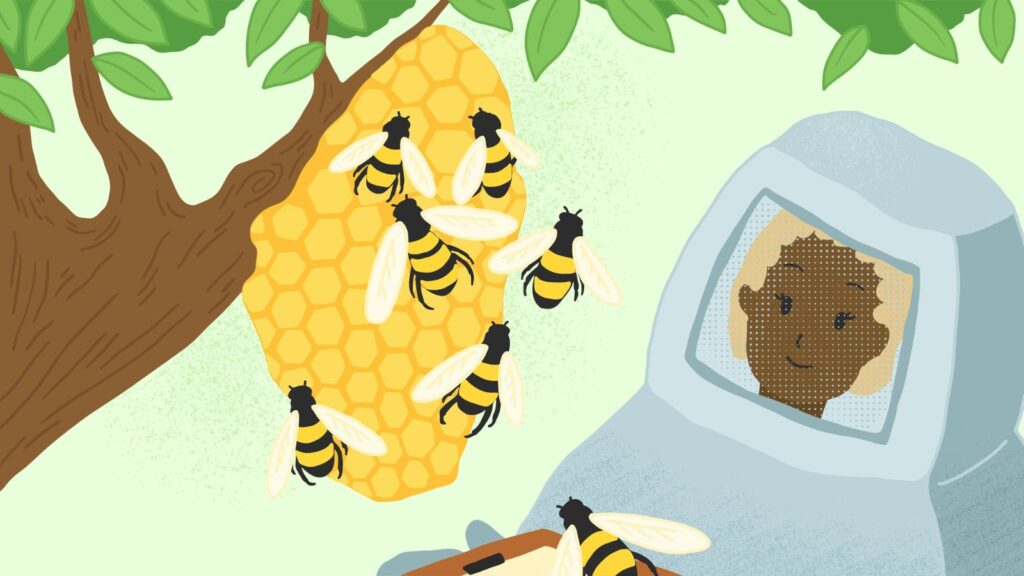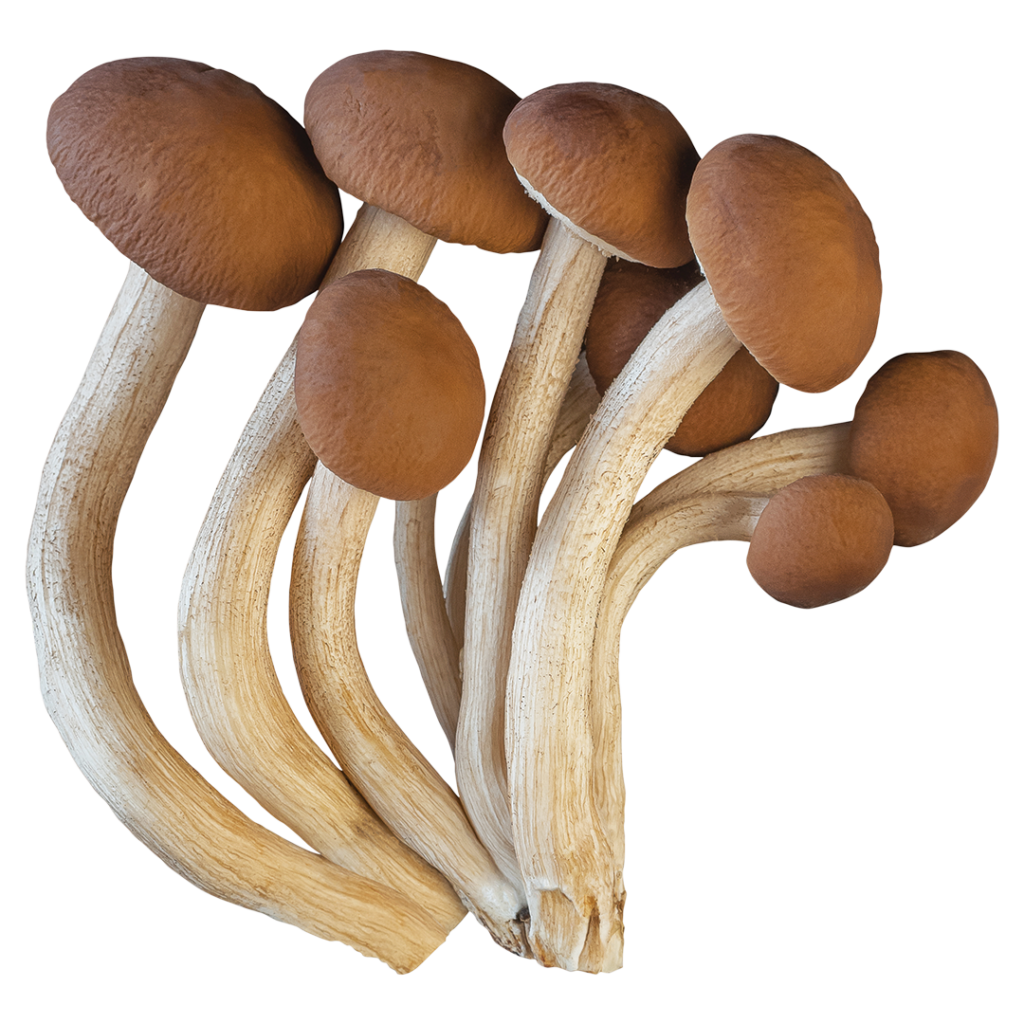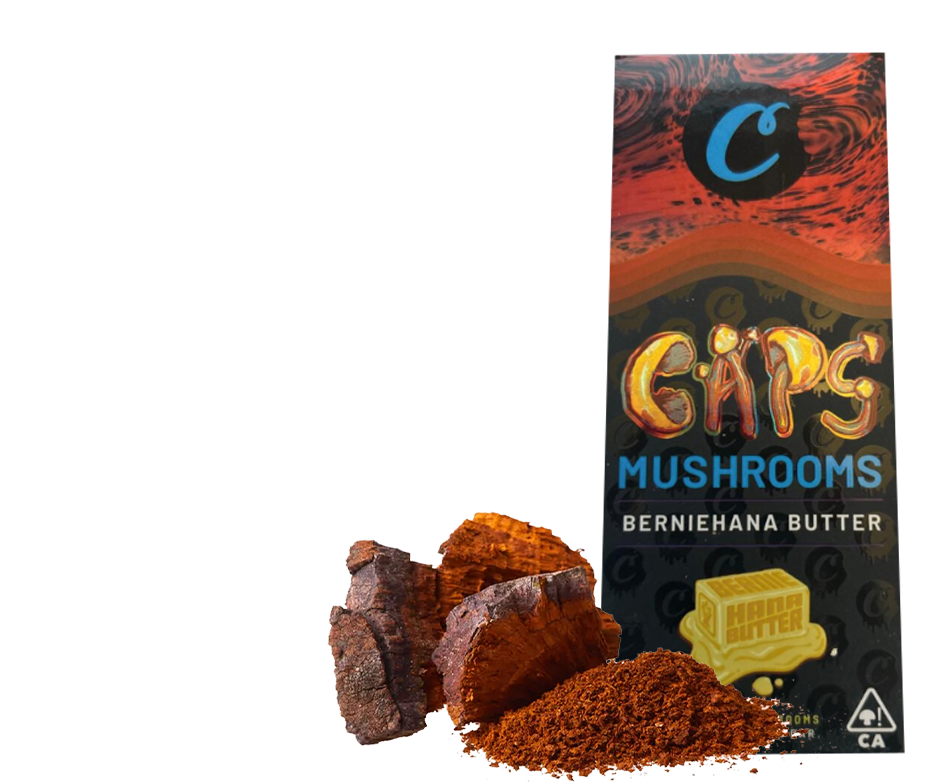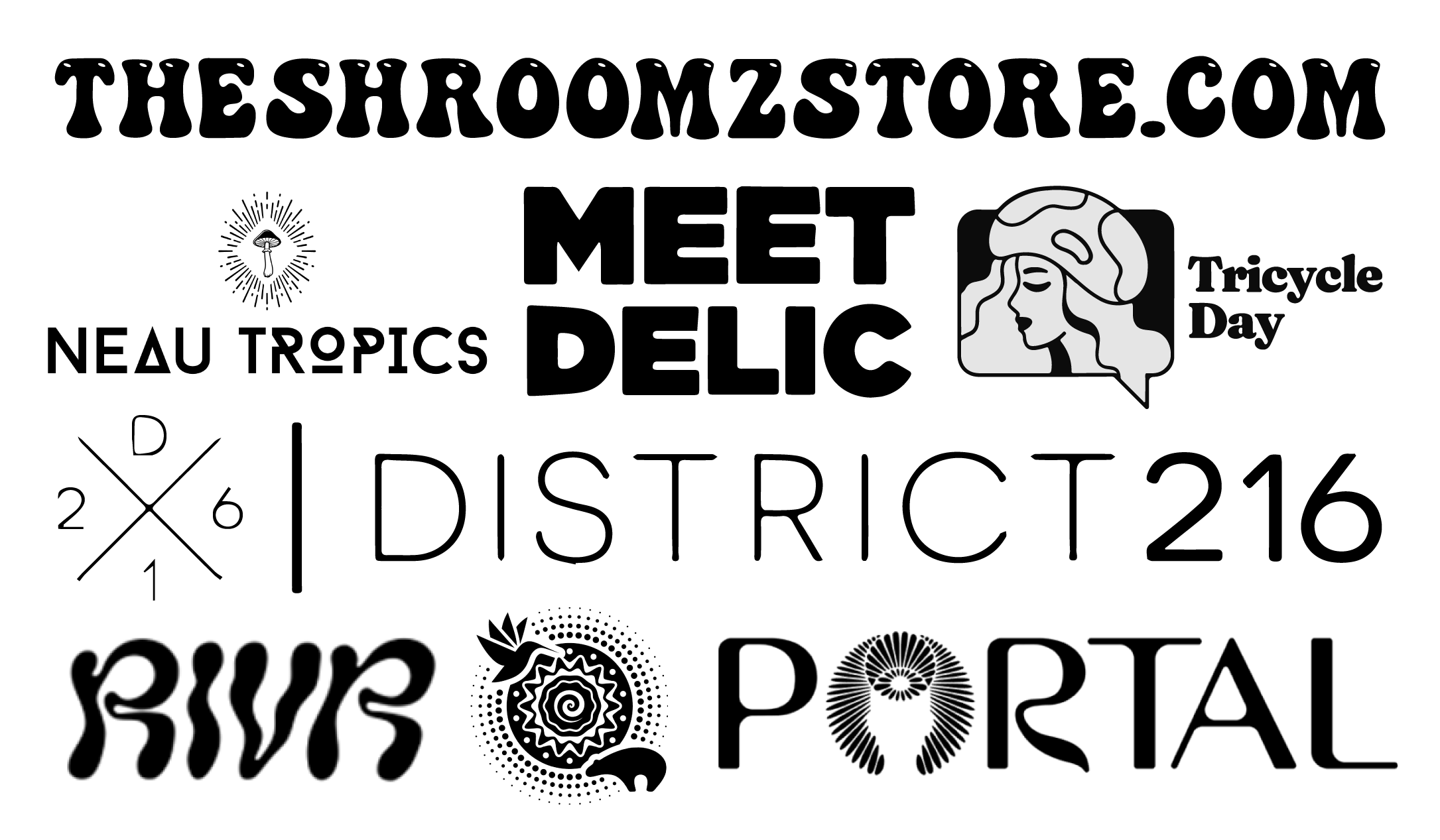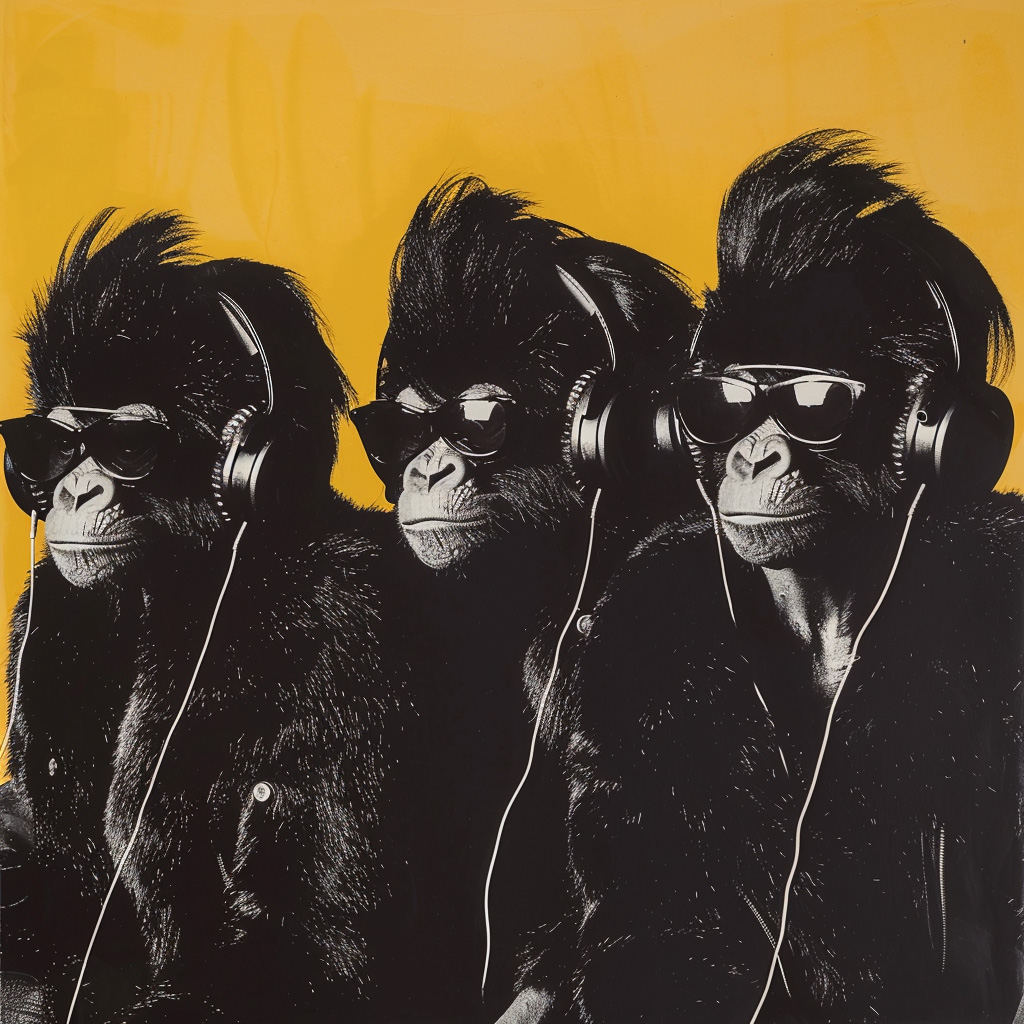The following is Part One in a series. Read Part Two here.
In the book Columbus and other Cannibals, indigenous author Jack D. Forbes lucidly explores a psychological disease that has been informing human self-destructive behavior that Native American people have known about for years. After reading his book, it was clear to me that he was describing the same psycho-spiritual disease of the soul that I wrote about in my book, The Madness of George W. Bush: A Reflection of our Collective Psychosis. I introduce the idea that from the dawn of human history our species has fallen prey to a collective psychosis which I call malignant egophrenia. Speaking about this very same psychic epidemic, Forbes writes, “For several thousands of years human beings have suffered from a plague, a disease worse than leprosy, a sickness worse than malaria, a malady much more terrible than smallpox.”[i] Indigenous people have been tracking the same “psychic”[ii] virus that I call malignant egophrenia for many centuries and calling it “wetiko,” a Cree term which refers to a diabolically wicked person or spirit who terrorizes others. Professor Forbes, who was one of the founders of the Native American movement during the early sixties, says, “Tragically, the history of the world for the past 2,000 years is, in great part, the story of the epidemiology of the wetiko disease.”[iii] Wetiko/malignant egophrenia is a “psychosis” in the true sense of the word as being a “sickness of the soul or spirit.” Though calling it by different names, Forbes and I are both pointing at the same illness of the psyche, soul and spirit that has been at the root of humanity’s inhumanity to itself.
As if performing a magic ritual, in exploring the entity of wetiko, we first have to invoke its spirit and enter into relationship with it. We must contemplate and engage wetiko as objectively as we are able, as if it exists outside of ourselves, lest we get too “mixed up” with the object of our contemplation. Due to its unique psychic origin, the epidemiology of wetiko is different than any other disease. An intrinsic challenge to our investigation of the wetiko virus is that it is incarnating in the very psyche which itself is the means of our investigation. Aware of this conundrum, Forbes explains that he is attempting to examine the disease, “from a perspective as free as possible from assumptions created by the very disease being studied.”[iv] If we are not aware of the frame of reference through which we are examining the wetiko virus, our investigation will be tainted by the disease, obscuring the clear vision needed to start the healing process. Studying how wetiko disease manifests in others, as well as in the “other” part of ourselves, will help us to see “it” more objectively. Seeing this psychological disease manifesting in the world is the looking glass through which we can potentially recognize this same illness as it arises subjectively within our own minds.
After evoking an entity like wetiko, in order to study it as objectively as possible, we have to hermetically seal it within an alchemical container. This ensures that its mercurial spirit doesn’t vaporize back into the invisibility of the unconscious, where it would act itself out through us. Jung continually emphasized the importance of developing a container or vessel in which to catch troublesome spirits like wetiko. He writes, “Therefore, if anything is wrong, take it out of its place and put it in the vessel that is between your neighbor and yourself…For love of mankind, create a vessel into which you can catch all that damned poison. For it must be somewhere — it is always somewhere — and not to catch it, to say it doesn’t exist, gives the best chance to any germ.”[v] Wetiko is an elusive spirit that is challenging to pin down and say it is “this” or “that.” At the same time, it is critical that we attempt to delineate its properties. Unlike a physical virus, the wetiko bug can not be isolated materially, but its characteristic signature can be detected and seen in the peculiar operations of a psyche that is under its spell. To not recognize the existence of the wetiko germ — “to say it doesn’t exist” — allows the psychic infection to act itself out unrestrained. Being “always somewhere” is to be nonlocal, which means that it is always around, even potentially, or especially, within ourselves. In calling forth the wetiko spirit, we are simultaneously creating, through our inquiry itself, the container in which we can study this bug so as to understand what in fact we are dealing with, see how it operates out in the world, in others, and subjectively, within ourselves. In order to come full circle in our contemplative exercise/exorcise, we have to homeopathically take our contemplation back within ourselves. As if in a dream where the inner is the outer, we can recognize that the wetiko virus that we have been tracking “out there,” outside of ourselves, is a reflection of and co-related to the same process within ourselves. Encoded in wetiko’s symptomology is a revelation, something that is most important for us to know.
A Disease of Civilization
Wetiko/malignant egophrenia is a disease of civilization, or lack thereof. To quote Forbes, “To a considerable degree, the development of the wetiko disease corresponds to the rise of what Europeans choose to call civilization. This is no mere coincidence.”[vi] The unsustainable nature of industrial civilization is based on, and increasingly requires violence to maintain itself. Genuine “civilization,” in essence, means not killing people. Referring to the lack of “civility” in modern society, Gandhi was asked what he thought of Western civilization and responded by saying, “I think it would be a good idea.” It makes sense that native people would know about malignant egophrenia, as they were both oppressed by, but weren’t, at least initially, under the “curse” of modern civilization. Being under the sway of modern civilization can feel like something foreign to our nature is being imposed upon us, as if we are living in an occupied land. Modern civilization suffers from the overly one-sided dominance of the rational, intellectual mind, a one-sidedness that seemingly dis-connects us from nature, from empathy, and from ourselves. Due to its disassociation from the whole, wetiko is a disturber of the peace of humanity and the natural world, a sickness which spawns aggression and is capable of inciting violence amongst living beings. The wetiko virus is the root cause of the inhumanity in human nature, or shall we say, our seemingly inhuman nature. This “psychic virus,” a “bug” in “the system,” in-forms and animates the madness of so-called civilization, which, in a self-perpetuating feedback loop feeds the madness within ourselves.
Forbes continues, “this disease, this wetiko (cannibal) psychosis, is the greatest epidemic sickness known to man.”[vii] We, as a species, are in the midst of a massive psychic epidemic, a virulent collective psychosis that has been brewing in the cauldron of humanity’s psyche from the beginning of time. Like a fractal, wetiko operates on multiple dimensions simultaneously — intra-personally (within individuals), inter-personally (between ourselves), as well as collectively (as a species). “Cannibalism,” in Forbes’s words, “is the consuming of another’s life for one’s own private purpose or profit.”[viii] Those afflicted with wetiko, like a cannibal, consume the life-force of others — human and nonhuman — for private purpose or profit, and do so without giving back something from their own lives. One example that symbolizes our self-destructive, collective madness is the oil companies’ destruction of the Amazonian rainforest, the lungs of our planet. This is literally a full-bodied revelation showing us what we are doing to ourselves. Another literal example that is symbolically illustrating the wetiko complex in action is Monsanto genetically engineering terminator seeds that do not reproduce a second generation, thus forcing farmers to buy new seeds from Monsanto for each year’s new crop. This makes survival for many poor farmers impossible, which has triggered a wave of suicides among farmers, as Monsanto grows richer from the process.
Forbes writes, “The overriding characteristic of the wetiko is that he consumes other human beings, that is, he is a predator and a cannibal. This is the central essence of the disease.”[ix] Predators, “full-blown” wetikos are not in touch with their own humanity, and therefore can’t see the humanity in others. Instead, they relate to others either as potential prey or as a threat to their dominance. As if a different breed who is more animal-like predator than ordinary human being, someone fully taken over by the wetiko psychosis consumes others’ lives, physically, emotionally, psychically and meta-physically, beyond just the material body and physical possessions to the level of meaning itself. Wetikos are the “anti-artists” of our culture, embodying the opposite of what creative artists do. Unlike an artist (please see my article “The Artist as Healer of the World”), who creates life-enhancing meaning and enriches the world without robbing others, a wetiko takes and consumes without giving anything back, continually draining and impoverishing the planet of resources.
We are currently in the midst of “the greatest epidemic sickness known to man” (please see my article “Diagnosis: Psychic Epidemic”). Many of us don’t even realize this, as our collective insanity is so pervasive that it has become normalized. Our collective madness has become transparent to us, as we see and interpret the world through it, rendering our madness invisible, thereby unwittingly colluding with the collective psychosis that is wreaking incredible death and destruction on our planet. Being “trans-parent,” our madness is beyond its mere appearance, which is to say, “beyond being apparent,” i.e., not visible. Our collective psychosis is invisible to us, as it expresses itself both in the very way we are looking, as well as all of the unspoken ways we have been conditioned not to perceive. Due to its cloak of invisibility, we don’t see our madness, a psychic blindness which makes us complicit in the creation of our madness.
Many of us can’t fathom the level of evil to which full-blown wetikos have fallen prey, and of which they are capable. Our lack of imagination of the evil existing in potential in humanity is a direct reflection of a lack of intimacy with our own potential evil, which enables the malevolence of wetiko to have nearly free rein in our world (please see my article “Shedding Light on Evil”). In our psychic blindness we are complicit in the spreading of the evil of the wetiko psychosis, a systematic evil whose depth is beyond the capacity of words to fully describe. Evil paralyzes the ability to language our experience, creating a seemingly unbridgeable gap between language and the event it is supposed to describe. Finding that place of no words, we simultaneously discover and create a new language, a language which is universal and transcends language itself, a language known as art.
A Parasite of a Different Order
When people are infected by the wetiko virus, Forbes writes, they are “the host for the wetiko parasites.”[x] The wetiko germ is a psychic tapeworm, a parasite of the mind. Just like certain computer viruses or malware infect and program a computer to self-destruct, mind-viruses like wetiko can program the human bio-computer to think, believe and behave in ways that result in our self-destruction. Wetiko is a virulent, psychic pathogen that insinuates thought-forms into our mind which, when unconsciously en-acted, feed it, and ultimately kills its host (us). It doesn’t want to kill us too quickly however, for to successfully implement its agenda of reproducing and propagating itself throughout the field, it must let the host live long enough to spread the virus. If the host dies too soon, the bug would be prematurely evicted and would suffer the inconvenience of having to find a new residence.
Like a cancer of the mind that metastasizes, in wetiko disease, a pathological part of the psyche co-opts and subsumes all of the healthy parts of the psyche into itself so as to serve its pathology. The personality then self-organizes an outer display of coherence around this pathogenic core, which “masks” the inner dysfunction, making it hard to recognize. In a psychic coup d’etat, the wetiko bug can usurp and displace the person, who becomes its puppet and marionette. Like a parasite, the wetiko virus can take over the will of an animal more evolved than itself, enlisting that creature into serving its nefarious agenda. Once the parasite becomes sufficiently entrenched within the psyche, the prime directive coordinating a person’s behavior comes from the disease, as it is now the one calling the shots. Just as someone infected with the rabies virus will resist drinking water, which would flush out the infection, someone taken over by the wetiko parasite will have nothing to do with anything that will help them get rid of the disease. Wetikos are phobic towards the light of truth, which they avoid like the plague. In advanced stages, this process takes over the person so completely that we could rightfully say the person is no longer there; they are just an empty shell carrying the disease. In a sense there is just the disease, operating through what appears to be a human being. The person becomes fully identified with their mask, their persona, but it is as if there is no one behind the mask.
Alien Intrusion
Speaking in his own language about the predation of the wetiko virus, the spiritual teacher Don Juan, of the Carlos Castaneda books, mentions that the ancient shamans called this “the topic of topics.”[xi] Don Juan explains, “We have a companion for life…We have a predator that came from the depths of the cosmos and took over the rule of our lives. Human beings are its prisoners. The predator is our lord and master.”[xii] This sounds just like the state of affairs being pointed at in the Bible when, for example, The Gospel of John refers to the devil as “the ruler of this world” (14:30; 16:11), and Paul speaks of Satan as “the god of this world” (Cor. 4:4). The Gnostic Gospel of Phillip, talking about the root of evil that lies within all of us, makes the similar point that unless this evil is recognized, “It masters us. We are its slaves. It takes us captive.” (II, 3, 83.5-30) Speaking about the predator, Don Juan continues, “It has rendered us docile, helpless. If we want to protest, it suppresses our protest. If we want to act independently, it demands that we don’t do so.”[xiii] It is striking how Don Juan’s description of the effects of these predators is being enacted in our increasingly militarized society, as our freedoms and liberties get taken away step by step. It is as if an inner, invisible state of affairs existing as a yet unrealized archetypal pattern deep within the soul of humanity is revealing itself by materializing in, as, and through the outside world.
To quote Don Juan, “Indeed we are held prisoner! This was an energetic fact for the sorcerers of ancient Mexico.”[xiv] Don Juan is referring to an “energetic fact” that I imagine most of us can relate to; i.e., there is “something” within us that stops us from expressing our true creative genius and attaining our full potential. These predators are “time-bandits,” consuming the precious hours of our lives, as if we are wage-slaves on a prison-planet “doing time.” Deepening his description of these predators, Don Juan elaborates, “They took over because we are food for them…we are their sustenance. Just as we rear chickens in chicken coops, gallineros, the predators rear us in human coops, humaneros.”[xv] The wetiko virus particularly flourishes in overpopulated cities, where people are “coop-ed up.” When we buy into group-think and are enlisted as a member of the herd, we become like sheep that are being led over the edge of a cliff, or cattle that are being raised to be slaughtered.
Don Juan continues, “The predators give us their mind, which becomes our mind.”[xvi] It is as if these predators are in competition with us for a “share” of our own mind. The predator shape-shifts and assumes our form, and if we are unaware of its masquerade, we will identify with its invasive thought-forms as if they are our own, and act them out. We will mistakenly believe that we are acting on our own impulses, with our best interests in mind. This predator, Don Juan continues, “fears that any moment its maneuver is going to be uncovered and food is going to be denied.”[xvii] The wetiko predator has an inner necessity, a brute compulsion born out of terror, as it continually has to feed itself so as to postpone its ever-approaching death. Don Juan continues, “Through the mind, which, after all, is their mind, the predators inject into the lives of human beings whatever is convenient for them [the predators].”[xviii] Cloaking itself in our form, this predator gets under our skin and “puts us on” as a disguise, fooling us to “buy” into its false version of who we are. (This is why the shortened name of Malignant Egophrenia is “ME disease,” referring to a distortion of our identity, i.e., our sense of “me”-ness). Instead of being in our power and serving ourselves, we “unwittingly” (which means to be “out of our wits,” i.e., not in our “right” mind) become the servant of the predator. Instead of being a sovereign being who is creating with our own thoughts, we will then be created by them, as the predator literally thinks in our place. It is as if the predator is sitting in our seat.
Speaking of the predator’s scheme, Don Juan says, “it proposes something, it agrees with its own proposition, and it makes you believe that you’ve done something of worth.”[xix] It is as if there is an alien “other,” an extraterrestrial, metaphysical entity which is subliminally intruding its mind into ours in such a way that we identify with its point of view and dis-connect from our own. Don Juan refers to this situation as a “foreign installation,” as if some alien race has set up a space station inside of our minds. This is exactly what the Gnostics — the ones who “know” — are pointing at when they talk about alien predators called “Archons” who infiltrate and subvert the workings of our mind.[xx] To the extent that we are not conscious of this alien take over of our psyche, we become drafted into the predator’s sinister agenda, unwittingly becoming its slaves. This state of inner, psychological warfare is mirrored by the sinister psy-ops (psychological operations) being instituted by the powers-that-be in the outside world. The disease feeds on our unawareness of it.
Vampires
Forbes writes, “The wetiko psychosis is a sickness of the spirit that takes people down an ugly path with no heart…After all, the wetiko disease turns such people into werewolves and vampires, creatures of the Europeans nightmare world, and creatures of the wetiko’s reality.”[xxi] The wetiko psychosis takes people down, period. Werewolves and vampires are shape-shifting creatures, symbolic representations of the horrific potential within all of us to be taken over by and act out the archetypal shadow, regressing to an archaic level of the psyche and become like a predatory animal or nonhuman creature. When these not-yet-humanized psychic energies break through into consciousness and are not mediated through consciousness, Jung writes, “they sweep everything before them like a torrent and turn men into creatures for whom the word ‘beast’ is still too good a name.”[xxii]
Vampires, considered to be the darkest creature of evil’s arsenal, have haunted our imagination for ages, as they are representatives of a living process that exists deep within the human psyche. A vampire is not a human figure, but rather, is a soulless creature, a being who has lost its soul; or if it hasn’t lost its soul, its soul has been “damned,” which is a soul that is lost. Either way, there’s something missing. Isolated from the world, it has lost any connection with the part of itself that is related to everything else; from its point of view, the world exists simply for its use. Although it has lost connection with its heart and soul, a vampire hasn’t lost its mind (though in one sense it has), as vampires often have clever and incisive intellects that cloak their pathology, making their disease hard to see. This is similar to how people in a deep state of trauma can have brilliant minds as well, a gift that can hide the extent of their trauma, making their malady hard to recognize. The sharpness of the vampire’s mind, instead of being devoted to gaining insight into their malady and healing from it, however, is used for the “passing on” and propagation of their dark art.
One of the undead, a vampire is death taking living, human form. The wetiko virus is ultimately not a living life-form, but rather, a living form of death. Wetiko, like a virus, is “dead” matter; it is only in a living creature that viruses acquires a “quasi-life.” Members of the living dead, vampires are neither truly alive, nor truly dead. Like a full-fledged vampire, “full-blown” wetikos have forfeited their humanity, becoming a conduit for the impersonal, transpersonal and depersonalizing wetiko virus to incarnate through them. They are a living portal, an opening in the third-dimensional fabric of space/time through which this contagious, virulent higher-dimensional virus can spread itself throughout the field, both locally and nonlocally.
Lacking a sense of soul, wetikos are efficient “machines,” dedicated to preserving and serving “the state,” which, to quote Forbes, “is itself a creature of the wetikos who have seized control of its power apparatus.”[xxiii] A full-fledged wetiko has become a robotic automaton, conditioned to react to certain stimuli like a reflex. They have become part of “the machine,” with no spontaneity, creativity, originality, nor free thinking programmed in. De-humanized, wetikos have lost touch with any sense of aesthetics, of appreciating the inherent beauty of life, and have become “an-aesthetic,” i.e., anesthetized and numb to what it is to be a human being. Emissaries of an authoritarian, militarized, patriarchal planetary “culture,” the wetiko bug breeds fascism, and terror. To quote the great healer Wilhelm Reich, “Fascism is the vampire leeched to the body of the living, the impulse to murder given free rein.”[xxiv] Fascism is the outer, collective political expression of an individual’s ravaged inner landscape that has been crippled and suppressed by the authoritarian civilization of “the machine.”
Like a vampire, in full-blown wetikos there is nobody home, which is one of the reasons why, symbolically speaking, vampires have no reflection in a mirror (which, mythologically speaking, reflect back images of the human soul). Full-blown wetikos are empty to the core, so there is nothing to reflect. Inwardly there is just an infinite void, a sponge that can never be saturated, a devouring black hole that is feeding on the universe. Their atrophied soul has been emptied out like a piece of wood hollowed out by psychic termites. Full-blown wetikos are so compulsively possessed by and identical with the unconscious in its destructive, consciousness-negating form that they are not able to see nor think about themselves, which philosopher Hannah Arendt claims is one of the primary characteristics of evil. Unable to self-reflect, they can no longer access within themselves the faculty of the psyche from which such activity derives. One of the reasons we can’t see a vampire’s reflection in a mirror, however, is because our own inner, unconscious vampire obscures the reflection, which is to say that the unacknowledged specter of our own shadow gets in the way.
A vampire casts no shadow. In order to cast a shadow, there has to be a source of light. In a vampire there is no light, only infinite darkness. Not being a living being, a vampire has no inherent reality, no substance. Only a thing of substantial existence can produce a shadow. Vampires can’t cast a shadow, however, because they are the living embodiment of and identical with the archetypal shadow. A shadow casts no shadow of itself, as the shadow itself has no substance. There are benefits that accrue to the vampire because of its ability to not cast a shadow — it is then easier for the vampire to hide its true identity, move in the hidden shadows, become invisible, and be able to prey on people. Not casting a shadow, the vampire, a shape-shifter who is a master of camouflage and disguise, is able to easily seduce and entice the unaware, as sugar-coated vampires entrap us through our unconscious shadow and blind-spots. This is to say that the loss and dis-owning of our shadow can lead to vampirism. The vampire archetype gets activated within us when we turn our backs on our own darkness, rendering our shadow invisible to ourselves. We can’t see vampires because we have chosen not to see those aspects of ourselves that are most like the vampire. Our reluctance to see our own vampiric qualities blinds us to the vampiric energies in others.
In addition to the weak and defenseless, vampires seek out people who are on the verge of a quantum, evolutionary leap in consciousness, but have not yet fully integrated their realizations and come out the other side. These individuals are in an energetically sensitive and “charged” condition, and their openness and vulnerability invites the vampiric entities to help themselves and gorge on the light of their expanding awareness. The strategy of these predators is to distract us so as to keep our attention directed outwards, thereby stopping us from finding the light within ourselves, which would “kill” the vampires. If we hold up a mirror and reflect back the insanity being exhibited by those stricken by the wetiko psychosis, we run the very real risk of being accused of being the ones who are crazy. If we do manage to connect with the light within ourselves and try to share it with others, these nonlocal vampiric entities (what I have in previous articles called “nonlocal demons,” or NLD for short), not bound by the third-dimensional laws of space and time, will try, via their “connections” to the nonlocal field, to stop us by influencing other people to turn against us. This process can destroy us, or, if we have the meta-awareness to see what is happening and are able to skillfully navigate our way through, can serve to further strengthen our intention, deepen our connection with the light of lucidity, hone our skill of creatively transmitting our realizations, and cultivate more open-hearted compassion. It is as if these psychic, nonlocal vampires are guardians of the threshold of evolution.
Just like vampires, full-blown wetikos have a thirst for the very thing they lack — the mystical essence of life — i.e., the “blood” of our soul. In “consuming” other human beings, wetiko disease is a feeding thing, a psychic eating disorder in which the stricken psyche consumes other psyches, as well as, ultimately, itself. Wetikos are what are called “psychophagic,” i.e., soul-eaters. Savaged by the ferocity of their unending hunger, full-blown wetikos have become possessed by an insatiable craving that can never be filled. This vampiric feeding is an unholy parody, a satanic reflection, of the self-renewal of life. This perverse inner process is mirrored collectively by the consumer society in which we live, a culture that continually fans the flames of never-ending desires, conditioning us to always want MORE. As if starving, we are in an endless feeding frenzy, trying to fill a bottomless void. This process of rabid, obsessive/compulsive consumption is a reflection of a deeper, inner shared sense of spiritual starvation. The entity of the global economic system itself is a living symbol of out-of-control wetiko disease “in business.”
Viruses like wetiko are all about copying themselves. A virus can’t replicate itself, however; it has to use some other vehicle as its means of reproducing itself. They need us to be their birthing chamber. To the extent we are not aware of their ploy, these higher-dimensional spirit parasites put us on, wearing us like their third-dimensional space suits. These psychic vampires are compelled to replicate themselves through us so that we can then “pass on” and transmit the bug to others. This process is analogous to when someone is infected with the rabies virus. In advanced stages of the disease, like a rabid animal they will be taken over by the irresistible urge to bite other creatures so as to pass on the virus. People taken over by the rabies virus are a living, frothing symbol of what the wetiko virus does in its full-blown virulent stage.
In a vampiric lineage, the wetiko virus’s self-propagation is accomplished through the medium of the “family system” (be it our family of origin, or the human family), as the legacy of abuse (be it physical, sexual, political, emotional, psychological, or spiritual) gets passed down, both individually and collectively, and transmitted over generations, continually incarnating itself through the living. It is through the traumatic shattering of our wholeness that wetiko passes its fractured logic and distorted code into the body/mind of another. As if under a curse, our species has been suffering from a collective, inherited form of PTSD (Post-Traumatic Stress Disorder). Remaking their victims in their own image, the wetikos’ victims join the legion of the “damned,” themselves becoming holders of an unholy lineage. This “curse” will continue until we intervene in the spreading of this vampiric mind-parasite, and the chain of never-ending abuse is stopped.
Highly Contagious
Speaking about wetikos, Forbes says, “they are insane (unclean) in the true sense of the word. They are mentally ill and tragically, the form of soul-sickness that they carry is catching.”[xxv] Wetiko psychosis is highly contagious, spreading through the channel of our shared unconsciousness. Its vectors of infection and propagation do not travel like a physical pathogen. This fluidly moving, nomadically wandering bug reciprocally reinforces, feeds off of and into each of our unconscious blind-spots, which is how it nonlocally propagates itself throughout the field. In wetiko there is a code or logic which affects/infects awareness in an analogous way to how the DNA in a virus passes into and infects a cell. People who are channeling the vibratory frequency of wetiko align with each other through psychic resonance to reinforce their shared agreement so as to uphold their deranged view of reality. Collaboratively supporting their mutual psychosis, groups of people drawn together by the unconscious can potentially become a socio-political force with which to be reckoned. When a group of people are in agreement about anything, whether it is true or not, their alignment with each other exerts a contagious, magnetic field-of-force which can sway and attract the unaware into itself.
People taken over by the wetiko virus usually don’t suspect a thing about how they have been “conned.” The wetiko culture offers no incentive for them to self-reflectingly speculate upon their depraved circumstance; on the contrary, the nonlocal field configures itself to conspire, enable and further cultivate their psychosis. When someone is a full-blown, unrecognized wetiko, the field around them torques so as to protect, collude with, and feed into their psychosis in a way that en-trances everyone around them. Once under the wetiko spell, they lose the capacity to recognize the wetiko pathology in others. In a situation of “group narcissism,” wetikos at different stages of the disease assume particular postures and roles relative to each other so as to protect and shield themselves from their own insanity and darkness. They feed and reinforce each others’ narcissism because it enhances their own. Speaking about the type of person who is typically susceptible to fall prey to the wetiko virus, Forbes writes that it is usually the individual “whose strings are pulled by others or who follow a life-path dictated by others. Thus they are ripe for the wetiko infection.”[xxvi] Not in touch with their inner guidance, they project authority outside of themselves, and become very suggestible to the consensus, agreed-upon opinion of the dominant pack. Losing touch with their own discernment and ability for critical thinking, the “mass man” becomes part of the mindless herd and falls prey to “group-think,” whose members co-dependently enable each other to uphold their shared version of the (wetiko) world. Their group consensus about the nature of reality gets increasingly harder to sustain as time passes, however, as, like a house of cards ready to collapse at any moment, their vision of the world is based on the fundamental error of not being true. Strangely enough, people under the collective enchantment of wetiko become fanatically attached to supporting an agenda that oftentimes is diametrically opposed to serving their own best interest. This is an outer reflection of the inner state of being under the sway of the self-destructive wetiko parasite.
By being “unclean,” it is as if there is an un-holy or evil spirit that has taken up residence in the beings of those taken over by wetiko. They are unwittingly being used as instruments, as covert operatives of this darker, unclean spirit to proliferate itself in the wider field. Secret agents of the disease, wetikos’ secret is self-secret, in that it is secret even to themselves. As is true for any of us when we are taken over by something other than ourselves, carriers of wetiko don’t know how possessed they are at any given moment. The experience of being taken over by something more powerful than themselves always happens in their blind spot (please see my article “Are We Possessed?”).
The wetiko bug influences our perceptions by stealth and subterfuge so as to hide and obfuscate itself from being seen. Like a higher-dimensional, alien form of psychic foliage, the wetiko germ implants its seeds into and takes root and germinates within our mind, distracting and deviating us from our true vocation, calling and spiritual path. The alien, and alienating, effect of the wetiko virus, the very thing we need to see, is disguised by the way we think, perceive, and give meaning to our experience. When someone becomes a full, card-carrying member of the cult of wetiko (please see my article “The Bush Cult”), it is as if their mind has been colonized by the virus in such a way that they themselves don’t have the slightest clue about their own pathological condition. Wetikos don’t experience themselves as needing help; for them other people are always “the problem.” They usually don’t mind their disease, or even recognize it, because it is all they know, and their leaders and the very society they live in encourage them in it. They neither have an appreciation of their disorder, nor do they realize how truly sick they are.
Forbes writes, “one of the major traits characterizing the truly evil and extreme form of wetikoism is arrogance.”[xxvii] In being “full-blown,” wetikos are arrogantly puffed up with their own self-importance, i.e., “inflated.” Instruments for evil, wetikos are arrogantly, ignorantly and self-righteously convinced they are in possession of the truth and working for the highest good. It is as if they are unable to know that what they are doing is evil, unable to register their actions as anything other than good. Forbes concludes, “In any case, the wetiko disease, the sickness of exploitation, has been spreading as a contagion for the past several thousand years. And as a contagion unchecked by most vaccines, it tends to become worse rather than better with time. More and more people catch it, in more and more places, and they become the true teachers of the young.”[xxviii] Wetiko culture gets taught both at home and in “the academy,” where people become “certified” in the ways of its world, and are thus accredited and empowered to spread its corrupting ways on ever grander scales.
Speaking about the rapidly spreading wetiko contagion, Forbes writes, “It is spread by the wetikos themselves as they recruit or corrupt others. It is spread today by history books, television, military training programs, police training programs, comic books, pornographic magazines, films, right-wing movements, fanatics of various kinds, high-pressure missionary groups, and numerous governments.”[xxix] All of the mainstream, culturally-sanctioned, corporatized institutions are in the business of indoctrination, telling us what to think and not think about, as well as how to think. Our mind is continually being massaged into shape by the prevailing culture, as if our ‘true face’ is being “lifted.” It is as if our spiritual pockets are being picked. Our “civilization” has become the mouthpiece for the propaganda organ of the disease, entrancing us to “buy” into its viewpoint as we are bled to death of what really counts most. The “culture” (sic) that in-forms and forms around wetiko illness is itself a channel of its transmission, and if we sign on the dotted line and subscribe to its viewpoint, its life-denying culture will gradually subsume us into itself, as we become unwitting agents doing ITS bidding. This is how the ever-expanding, self-generating psychic empire of collective psychosis “works,” as it takes over and increasingly approaches “full-employment.”
Full-blown wetikos might be petty tyrants at home or at work but still might be one of the impoverished and oppressed, wielding no real power in the world at large. What Forbes refers to as “Big Wetikos,” are full-blown wetikos who have climbed the wetiko ladder, jumped through the wetiko hoops, and have risen in the wetiko ranks so as to find themselves occupying positions of power where they can influence and control events in our world so as to game the system. The Big Wetikos who control the levers of power, be they the super wealthy, CEO’s of corporations, bank presidents, or leaders of nation-states, are particularly dangerous, as they define the terms of our dialogue, dominating the agreed upon historical narrative. Managing our perceptions through the propaganda engines of the mainstream, corporate media which they control (please see my article “The War on Consciousness”), Big Wetikos in positions of power create the limits of our conversation and debate. Wetiko is an idealogical virus whose “currency” is the syntax of ideas. Wetiko deviates our mental syntax, i.e., the rules of how we form language, thereby distorting the semantics, the meaning we place on our experience of ourselves and the world. Wetiko is a semantic disorder, as it alters the axioms through which the psyche shapes, casts and “spells” its words, thereby conjuring up its experiences. The thought-forms and beliefs that express and represent the wetiko virus act as an intrinisic, built-in control system, defining the limits of what we imagine our possibilities are, as individuals, nations and as a species. Wetikoism supports and perpetuates whatever prevailing myths, stories, dogmas and (un)holy books reinforce its nefarious, self-serving agenda. Books, and other forms of information, which don’t support wetikos warped version of the way things are, are metaphorically speaking, “burned” (or in some cases, literally — the books of the aforementioned Wilhelm Reich, for example, were actually burned by the United States Government. In describing what he called “the emotional plague,” Reich was in his own way pointing at the evils of the wetiko virus).
We live inside of a world that, like a dream, is an interactive mirror inseparable from our own inner being. A reflection of a condition deep within ourselves, wetiko disease is an unmediated, direct manifestation of the dreamlike nature of the universe, which is the very realization that wetiko is showing us. Recognizing the dreamlike nature of our situation creates a living antibody made out of awareness itself that is custom-designed to neutralize the psychic pathogen of wetiko. This is to say that encoded within the deadly pathology of wetiko is an insight and revelation which is its own cure (please see my article “Shadow Projection is its own Medicine”). Its own self-revelation, wetiko disease provides its own psychic medicine, but in order to receive its healing ‘benefits’ we have to recognize and more deeply understand this miracle in psycho-spiritual health care. How amazing — the very thing that is potentially destroying us is at the same time waking us up. A potential catalyst for our evolution as a species, we are all co-creating and dreaming wetiko up together. Wetiko is a truly quantum phenomenon, in that it is the deadliest poison and the most healing medicine co-joined in one superposed state. Will wetiko kill us? Or will it awaken us? Everything depends upon if we recognize what it is potentially revealing to us. The prognosis for wetiko/malignant egophrenia depends upon how we dream it.
Now that we have the dia-gnosis and pro-gnosis, all we need is to discover the cure, which requires having ‘gnosis’ itself…. To be continued in Part 2.
This article first appeared on Paul Levy’s website. © Copyright 2010.
[i] Forbes, Columbus and other Cannibals, p. xv.
[ii] ‘psychic’ is used throughout this article as the adjective form of “psyche” and not with any parapsychological connotation
[iii] Forbes, Columbus and other Cannibals, p. 46.
[iv] Forbes, Columbus and other Cannibals, p. xvii-xviii.
[v] C. G. Jung, Nietzsche’s Zarathustra, vol. 2, p. 1321.
[vi] Ibid., p. 39.
[vii] Ibid., p. xvi.
[viii] Ibid., p. 24.
[ix] Ibid., p. 49.
[x] Ibid., p. 60.
[xi] Castaneda, The Active Side of Infinity, p. 218.
[xii] Ibid., p. 218.
[xiii] Ibid., p. 218.
[xiv] Ibid., p. 219.
[xv] Ibid., p. 219.
[xvi] Ibid., p. 220.
[xvii] Ibid., p. 220.
[xviii] Ibid., p. 220.
[xix] Ibid., p. 229.
[xx] Please see Not in His Image: Gnostic Vision, Sacred Ecology, and the Future of Belief, by John Lash. His website is metahistory.org.
[xxi] Forbes, Columbus and other Cannibals, p. 188.
[xxii] Jung, The Symbolic Life, CW 18, par. 1374.
[xxiii] Forbes, Columbus and other Cannibals, p. 153.
[xxiv] Reich, The Mass Psychology of Fascism, p. xvii.
[xxv] Forbes, Columbus and other Cannibals, p. 18.
[xxvi] Ibid., p. 43.
[xxvii] Ibid., p. 52.
[xxviii] Ibid., p. xix.
[xxix] Ibid., p. 49.
Image by Armigeress, courtesy of Creative Commons license.


